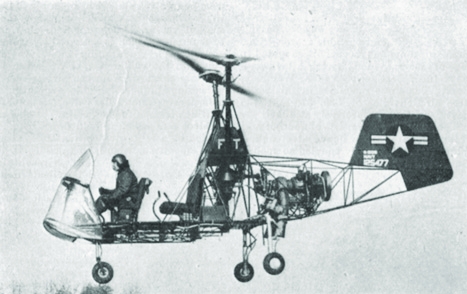One can only hope that the pilot in this picture was wrapped up well, given that the flight was taking place during winter in Connecticut. Reported by The Engineer in February 1952, the pilot is in charge of the world’s first turbo-rotor flight. News of the flight was given by the US Navy’s Bureau of Aeronautics, which said the initial flight took place on 10 December 1951.

Sixty years ago, The Engineer had a US correspondent who reported that the Kaman Aircraft Corporation had installed a 175hp Boeing XT-50 gas turbine in a US Navy K-225 helicopter to conduct flight tests of the gas turbine.
The unnamed journalist wrote: ’The turbine installation in the helicopter is similar to a turbo-prop installation in a conventional aircraft. The gas turbine was made by Boeing and has been undergoing tests in land and water vehicles.’
“A great saving in weight has been made by using a gas turbine”
This marked the first application of the turbine in a helicopter and engineers were understood to have expected an improved performance compared to helicopters powered by piston engine.
’Most of the increased performance can be attributed to the great saving in weight which is brought about by the use of a gas turbine,’ wrote our US reporter. ’Whereas the normal piston engine installation of the K-225 weighs in excess of 500 pounds, the turbine installation totals less than half that weight.’
A February, 2012 issue of The Engineer reported Eurocopter’s X3 reaching a true airspeed of 232 knots (267mph; 430km/h) at only 70 per cent power during test flights in May 2011.
Details of the K-225’s flight envelope were in short supply but we do know that in 1951 engineers were beginning to realise that mechanical simplification was another advantage of the gas-turbine power plant.




Red Bull makes hydrogen fuel cell play with AVL
Formula 1 is an anachronistic anomaly where its only cutting edge is in engine development. The rules prohibit any real innovation and there would be...